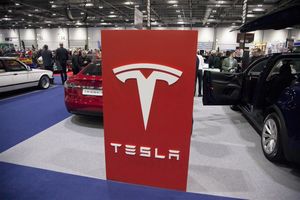
Nvidia (NASDAQ: NVDA) CEO Jensen Huang has made a monumental prediction, forecasting that global AI infrastructure spending could skyrocket to between $3 trillion and $4 trillion by the end of the decade. This audacious outlook signals a profound re-architecture of computing and an "AI arms race," positioning Nvidia, already the dominant player in AI chips, for an unprecedented revenue opportunity potentially exceeding $1 trillion. The declaration has sent ripples across the tech industry and financial markets, underscoring the escalating commitment to artificial intelligence as the defining technology of the current era.
Huang's vision paints a picture of a new industrial revolution, where AI isn't just a software layer but the foundational bedrock of economic activity. This vast investment encompasses not only cutting-edge GPUs and specialized hardware but also the massive data centers, power grids, and intricate networking solutions required to sustain the computational demands of an increasingly intelligent world. The immediate implication is a sustained "capex supercycle" that will redefine market leadership and create new avenues for growth and competition across the technology landscape.
The Dawn of a Trillion-Dollar Era: Why Jensen Huang's AI Forecast Matters
Jensen Huang's prediction isn't merely an optimistic estimate; it's a strategic declaration from the helm of the company currently powering the vast majority of the world's AI advancements. His forecast of a $3 trillion to $4 trillion investment in AI infrastructure by 2030 underscores a fundamental shift in computing, moving from node-scale to rack-scale systems designed for generative AI's immense processing needs. This transformation is embodied by innovations like Nvidia's NVLink 72, which allows an entire rack to operate as a single, highly efficient computing unit.
Nvidia's journey to this pivotal moment spans decades. Founded in 1993, the company invented the Graphics Processing Unit (GPU) in 1999, a technology initially for 3D graphics that later proved indispensable for parallel processing in AI. The release of its CUDA platform in 2006 democratized GPU computing for researchers, and by 2012, Nvidia GPUs were powering the breakthrough AlexNet neural network, marking the dawn of modern AI. The company's central role became globally evident with the 2022 public release of OpenAI's ChatGPT, developed on a supercomputer powered by 10,000 Nvidia (NASDAQ: NVDA) GPUs. Nvidia now consistently delivers annual chip updates, including its Blackwell and upcoming Rubin architectures, cementing its market leadership.
Key players driving this infrastructure boom include not only Nvidia but also rival chipmakers like Advanced Micro Devices (NASDAQ: AMD) and Intel (NASDAQ: INTC), as well as hyperscale cloud service providers (CSPs) such as Microsoft (NASDAQ: MSFT) (Azure), Amazon (NASDAQ: AMZN) (AWS), and Google (NASDAQ: GOOGL) (Google Cloud). These CSPs are already pouring billions into AI infrastructure, with data center capital spending projected to hit $600 billion this year alone. Beyond the core players, the ecosystem extends to memory suppliers like SK Hynix (KRX: 000660) and Micron Technology (NASDAQ: MU), and networking specialists like Broadcom (NASDAQ: AVGO).
Despite Nvidia's robust financial performance, with surging data center revenue, market reactions to Huang's latest pronouncements have sometimes been nuanced. High investor expectations, coupled with the sheer scale of the AI market, can lead to seemingly "muted" stock responses even to positive news. Concerns about potential "AI bubbles," geopolitical tensions affecting chip sales to markets like China, and the sustainability of such rapid growth also temper sentiment. Nevertheless, the long-term outlook for Nvidia and the broader AI ecosystem remains overwhelmingly bullish among analysts, who view the current phase as the early stages of a multi-year capital expenditure supercycle.
The AI Gold Rush: Who Wins and Who Faces the Gauntlet
The colossal $4 trillion AI infrastructure spending represents a true gold rush, creating clear winners poised for exponential growth and posing significant challenges for those unable to adapt.
Unsurprisingly, Nvidia (NASDAQ: NVDA) leads the pack. With a projected market share of 70% to 95% in AI chips, its GPUs are the bedrock of AI data centers globally. Nvidia's advantage is not just in hardware but also in its comprehensive CUDA software ecosystem, which creates a powerful moat, making it difficult for competitors to lure developers away. With new architectures like Blackwell and Rubin on the horizon, Nvidia aims to further extend its technological lead and address critical issues like power efficiency in data centers.
The major cloud service providers are also massive beneficiaries. Microsoft (NASDAQ: MSFT), with its Azure cloud and strategic partnership with OpenAI, is experiencing substantial revenue growth driven by AI services. Chief Information Officers are increasingly prioritizing Azure for AI workloads. Amazon (NASDAQ: AMZN)'s AWS is seeing an acceleration in sales from AI spending, with the company investing heavily in its own custom AI chips like Trainium and Inferentia to optimize costs and performance. Google (NASDAQ: GOOGL) Cloud, leveraging its Vertex AI platform and custom-designed Tensor Processing Units (TPUs), is also attracting new customers and larger deals, despite being a smaller player in the cloud market. These hyperscalers are not just buying hardware; they are building "AI superfactories" on an unprecedented scale.
Advanced Micro Devices (NASDAQ: AMD) is carving out a significant niche, particularly in the AI inference market, with its MI series GPUs gaining traction. AMD is also a key player in the UALink Consortium, an initiative to create an open interconnect standard to challenge Nvidia's proprietary NVLink. Oracle's (NYSE: ORCL) substantial capital expenditure plans signal strong demand for AI chips, which AMD is well-positioned to capture. Broadcom (NASDAQ: AVGO) is another winner, benefiting from its strong position in data center networking and its growing custom AI chip business, reportedly securing a $10 billion order from a major AI customer. Furthermore, Taiwan Semiconductor Manufacturing Company (NYSE: TSM), as the primary contract manufacturer for Nvidia and other chip designers, is an agnostic winner, benefiting immensely from the surging demand for advanced chip fabrication services.
However, not everyone is set to win. Intel (NASDAQ: INTC) faces significant hurdles. Despite its efforts with Gaudi accelerators and a pivot towards AI, the company struggles to compete with Nvidia's dominance and AMD's growing presence. Layoffs and substantial spending cuts reflect these difficulties, as Intel's Gaudi chips face an uphill battle against established competitors. While Intel hopes to leverage its client processor dominance for the AI PC market, this ambition is threatened by AMD's advances. Companies without a strong AI integration strategy, especially those in traditional hardware or networking, risk commoditization or irrelevance. The high costs associated with developing and running large AI models also create barriers, potentially leading to market consolidation where smaller players struggle to keep pace with the investment levels of tech giants. The trend of hyperscalers developing their own custom AI chips could also lead to slower growth for third-party GPU providers if a significant portion of AI spending shifts to internally developed hardware.
A New Industrial Revolution: Broader Implications of the AI Infrastructure Boom
The projected $4 trillion investment in AI infrastructure isn't just a financial forecast; it's a blueprint for a new industrial revolution, with profound implications that extend across entire industries, reshape competitive landscapes, and demand urgent attention from regulators.
This massive spending by tech giants like Amazon (NASDAQ: AMZN), Microsoft (NASDAQ: MSFT), and Alphabet (NASDAQ: GOOGL) reflects a fundamental reorientation of capital towards technological enablement. It's driving broader industry trends such as enhanced operational efficiency, with AI automating tasks and optimizing supply chains across sectors from logistics to finance. Customer experiences are being transformed through personalized AI interactions, leading to greater loyalty. Crucially, AI is poised to accelerate research and development, potentially doubling the rate of innovation in knowledge-intensive industries by enabling faster code generation and scientific discovery. This concentration of investment also suggests increased industry concentration, where the largest, most AI-integrated firms are likely to grow even larger.
The ripple effects on competitors and partners are significant. Hyperscalers are leveraging their massive AI investments to bolster their cloud offerings, attracting more customers and solidifying their market dominance. This creates a cascading demand throughout the supply chain for high-powered AI components, from optical interconnects to advanced server integration solutions. Strategic partnerships, such as the "AI Infrastructure Partnership" (AIP) involving BlackRock (NYSE: BLK), Global Infrastructure Partners, Microsoft, MGX, Nvidia (NASDAQ: NVDA), and xAI, are emerging to mobilize tens of billions in capital for next-generation data centers, aiming to scale open-architecture platforms. However, smaller players face immense challenges due to the high costs of developing foundational AI models and acquiring the necessary computing resources, leading to potential market consolidation.
The rapid expansion of AI also necessitates robust regulatory frameworks. Governments worldwide are scrambling to develop policies to ensure responsible AI development, addressing critical areas like ethical guidelines, data privacy, and security. Concerns about algorithmic bias, the opacity of "black box" AI systems, and the potential for AI to facilitate anticompetitive behavior (e.g., price-fixing) are driving increased scrutiny from antitrust authorities. The environmental impact of energy-intensive AI infrastructure is also a growing concern, pushing for regulations and incentives for sustainable practices, including energy efficiency and renewable energy sources for data centers. International cooperation, exemplified by the EU's comprehensive AI Act, is intensifying to establish global norms for AI governance.
Historically, periods of massive technological investment have always reshaped societies. The 19th-century railroad boom connected distant regions, spurred industrial growth, and created new national markets. The Industrial Revolutions brought unprecedented economic growth through mechanization and electricity, albeit with social upheaval. The late 20th-century Information/Digital Revolution, driven by computers and the internet, fundamentally altered communication and information access. Common themes across these eras, mirrored in the current AI boom, include transformative economic impact, the crucial role of infrastructure, job market disruption and creation, and significant societal and regulatory challenges. The $4 trillion AI infrastructure investment represents a continuation of this pattern, promising unparalleled progress but also demanding careful navigation of its complex implications.
The Road Ahead: Navigating the AI Frontier
The trajectory set by a projected $4 trillion AI infrastructure investment by 2030 presents a future brimming with both short-term necessities and long-term possibilities, demanding strategic pivots and opening new market frontiers.
In the short term (1-3 years), we can expect an explosive growth in compute and data center capacity. Major cloud service providers are already committing hundreds of billions to expand their AI infrastructure, driving immediate demand for specialized chips, high-performance servers, and advanced cooling solutions. Nvidia (NASDAQ: NVDA), as the dominant chip provider, stands to benefit immensely. This immediate surge will also put immense pressure on power grids and water supplies, necessitating urgent investments in sustainable energy and infrastructure. Businesses will also begin integrating AI tools more widely, creating demand for professional services to aid deployment.
The long-term possibilities (beyond 3 years) are even more transformative. AI infrastructure is becoming the "essential infrastructure of our time," analogous to electricity and the internet. This sustained investment is expected to contribute over $15 trillion to the global economy by 2030, fundamentally reshaping industries and potentially leading to a new era of "agentic AI" where systems operate with increasing autonomy. Data centers themselves will evolve, likely tripling in capacity by 2030, with most demand coming from AI workloads, requiring advanced cooling and network upgrades. Geopolitical factors will increasingly influence where and how AI infrastructure is built, potentially leading to "sovereign AI" initiatives as nations prioritize technological independence.
To navigate this landscape, companies must undertake significant strategic pivots. Infrastructure modernization towards cloud-native, AI-optimized architectures is crucial, requiring not just technical upgrades but also organizational overhauls. Energy efficiency and sustainability will become paramount, driving investment in green data centers and renewable energy. Addressing the pervasive talent gap in AI engineering through training and partnerships is essential. Robust security and regulatory compliance frameworks are needed to protect vast AI datasets. Furthermore, fostering collaborative ecosystems between chip providers, cloud platforms, and open-source communities will be vital for accelerating deployment and mitigating risks. Companies also face the strategic dilemma of balancing aggressive investment with the risk of overbuilding or underinvesting, necessitating comprehensive financial planning that considers the full lifecycle costs.
The AI infrastructure boom also presents unique opportunities and challenges for emerging markets. Opportunities include the chance to leapfrog traditional development stages, leveraging AI for localized solutions in areas like agriculture and finance, and attracting strategic investments for national AI initiatives. However, significant challenges persist, including inadequate existing infrastructure, severe talent gaps, chronic power constraints, and language/cultural barriers that generic AI models often fail to address. Without focused local development and ownership, there's a risk of "digital colonialism," where emerging markets become overly dependent on foreign AI infrastructure.
Ultimately, the future could see several outcomes. The most likely scenario is accelerated technological advancement, leading to more powerful models, widespread AI adoption, and significant productivity gains. However, this could also lead to concentrated power and wealth among a few dominant tech giants. Infrastructure bottlenecks related to energy and water scarcity could emerge, despite massive investment. A heightened geopolitical AI race with fragmented global AI landscapes is also possible. The crucial factor will be how effectively governments, industries, and societies collaborate to ensure equitable access, sustainable growth, and responsible development to prevent a widening global digital divide and truly harness AI's transformative potential for all.
Conclusion: A New Era of Intelligence and Investment
Jensen Huang's prediction of a $3 trillion to $4 trillion AI infrastructure market by the decade's end is more than a forecast; it's a clarion call, signaling a profound shift in global economic and technological priorities. This monumental investment underscores that AI is not just another technology, but the core engine of a new industrial revolution, fundamentally reshaping industries and societies worldwide. Nvidia (NASDAQ: NVDA), with its dominant position in AI chips and its comprehensive software ecosystem, is poised to capture an unprecedented share of this market, with a potential $1 trillion revenue opportunity on the horizon.
Moving forward, the market will be characterized by sustained, aggressive capital expenditure from hyperscale cloud providers like Microsoft (NASDAQ: MSFT), Amazon (NASDAQ: AMZN), and Google (NASDAQ: GOOGL), who are building "AI superfactories" at an unprecedented pace. This will drive exponential growth in the semiconductor, data center, and networking sectors. The lasting impact of this AI infrastructure boom will be a profound economic transformation, contributing trillions to global GDP, creating new job categories, and driving innovation across healthcare, education, and climate resilience. However, this growth comes with significant challenges, notably the immense energy demands of AI data centers, which threaten to strain power grids and raise environmental concerns, necessitating urgent investments in sustainable solutions. Geopolitical risks and the need for robust regulatory frameworks to ensure ethical and fair AI development will also remain critical.
For investors, vigilance and strategic foresight are paramount. Key areas to monitor include the fundamental health and competitive advantages of companies in the AI supply chain, from chip designers to data center operators and specialized software providers. Keeping abreast of technological advancements in AI-optimized hardware, memory, and networking, as well as the expansion of edge AI, will be crucial. The evolving regulatory landscape, particularly concerning data privacy, ethics, and international governance, will significantly impact market dynamics. Investors should also track the massive capital expenditures of hyperscalers, significant M&A activities, and the growth of AI applications in niche industries. Given the inherent volatility of the AI sector, a diversified approach across different layers of the AI stack, coupled with a focus on financially sound companies with clear long-term visions and commitments to addressing emerging risks, will be essential for navigating this transformative era and capitalizing on its immense potential. The AI frontier is here, and its infrastructure is being built now.






